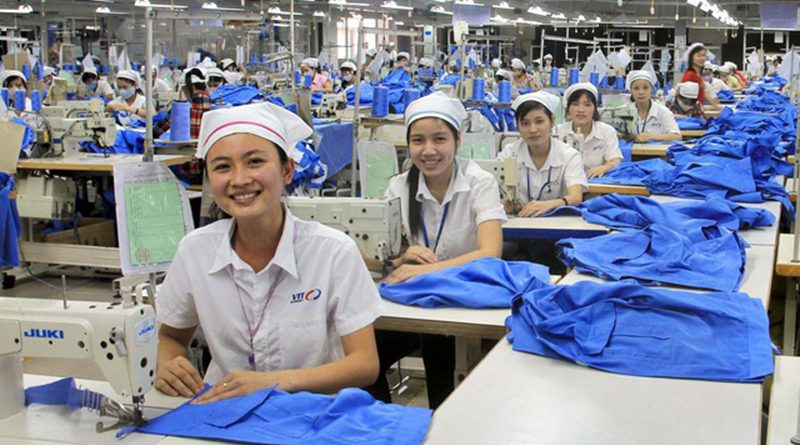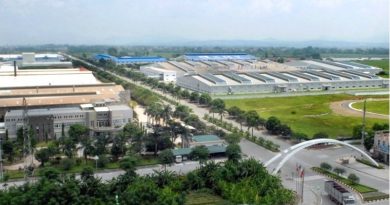Textile sector set for success
The Vietnamese textile and garment industry continued its big role as a key driver of Vietnam’s exports. Chairman of the Vietnam Textile and Apparel Association Vu Duc Giang talked with VIR’s Phuong Thu about how local firms can capitalise on free trade agreements and weather difficulties to move forward sustainably.

How did the Vietnamese textile and garment industry fare in 2019 and what are some of the new targets?
It was considered a particularly difficult year for the industry, with many unpredictable market fluctuations and an ongoing trade war. Vietnam’s textile and garment export turnover did not reach $40 billion as expected, but it still maintained a good growth rate at 7.5 per cent on-year. Currently, Vietnam’s textile and apparel industry is ranked third in the world in terms of exports, following China and Bangladesh, and ranks the largest in the ASEAN.
For the export market, turnover reached $15.2 billion from the United States, up 8.9 per cent compared to 2018 and accounting for almost 39 per cent of the total export turnover. Meanwhile, in 2019 there was an on-year reduction in export turnover of these products in the world’s five largest textile and apparel exporting countries, including China decreasing 2.3 per cent, Pakistan 4.6 per cent, and India and Bangladesh 1.4 and 2.4 per cent, respectively.
Vietnam’s textile and garment industry aims to achieve a total export value of $42 billion in 2020 and $60 billion in 2025. In order to make good use of the opportunities and minimise the impact of challenges, the Vietnam Textile and Apparel Association recommends enterprises to strengthen co-operation to produce raw materials, and sewing as well as establish a tight link of chains.
The industry could receive the most opportunities from the Comprehensive and Progressive Agreement for Trans-Pacific Partnership (CPTPP). How have local enterprises taken advantage of it?
The CPTPP is the first new-generation free trade agreement (FTA) that officially took effect last year. The deal helps to reduce import tariffs on textile and garment products and attract investment into Vietnam, which will make supply chains stronger for the industry here.
Without the CPTPP, Vietnam’s textile and garment products would face difficulties in entering markets such as Australia, Canada, and New Zealand because they had to compete with a giant rival from China, and Vietnam had not signed FTAs with those markets. However, after the CPTPP took effect, the most obvious benefit we can see is the industry has opened its doors to these markets. For instance, Canada’s demand for textile and garment products was worth some $13-14 billion each year, only 5 per cent of which was provided by Vietnam.
Last year, the proportion of exports to CPTPP member countries increased significantly. In addition, there is a strong shift in the investment of CPTPP countries into Vietnam’s textile and garment industry. In a short time, local businesses have diversified and do not depend on any one market. Over the years, the US market accounted for more than 50 per cent of the export turnover but so far, this number has fallen a lot.
What are the difficulties for the industry, and how can they be solved?
This industry is one of the most important in the Vietnamese economy, contributing 15 per cent of the nation’s total export value and having a high growth rate. There are more than 6,000 facilities in the country providing about three million jobs. The textile and garment industry has achieved high growth rates in recent years, but it will not be able to maintain this high speed forever without upgrading and renewing itself.
The biggest challenge in the industry is a lack of input materials when until now, we still rely heavily on raw materials from non-CPTPP member countries. Meanwhile, the development planning of the industry and material areas are also lacking and incomplete. In the long term, businesses have to step up their games by localising input materials, but it needs a hands-on approach from the government. The supply chain will ensure Vietnam takes advantage of FTAs that it signed and reaches sustainable development goals.
To create the necessary conditions to attract investment into the industry without risking adverse impacts on the environment, the government should adjust the textile and garment planning for the 2035-2040 period, and build textile and garment industrial zones of 500-1,000 hectares to encourage investment in spinning, weaving, and dyeing.
Besides this, another key task for this industry to grow further is to help Vietnamese enterprises export fashion products “Made in Vietnam” grow further and be able to target global markets.
In the context of Industry 4.0, local businesses must take initiative and have innovative thinking. Reaching out to expand the export market to the world, Vietnamese producers also should not forget the domestic market – this is also one of the important tasks and goals that the Vitas has set out in next 10-20 years.
Source: Vir.com.vn









